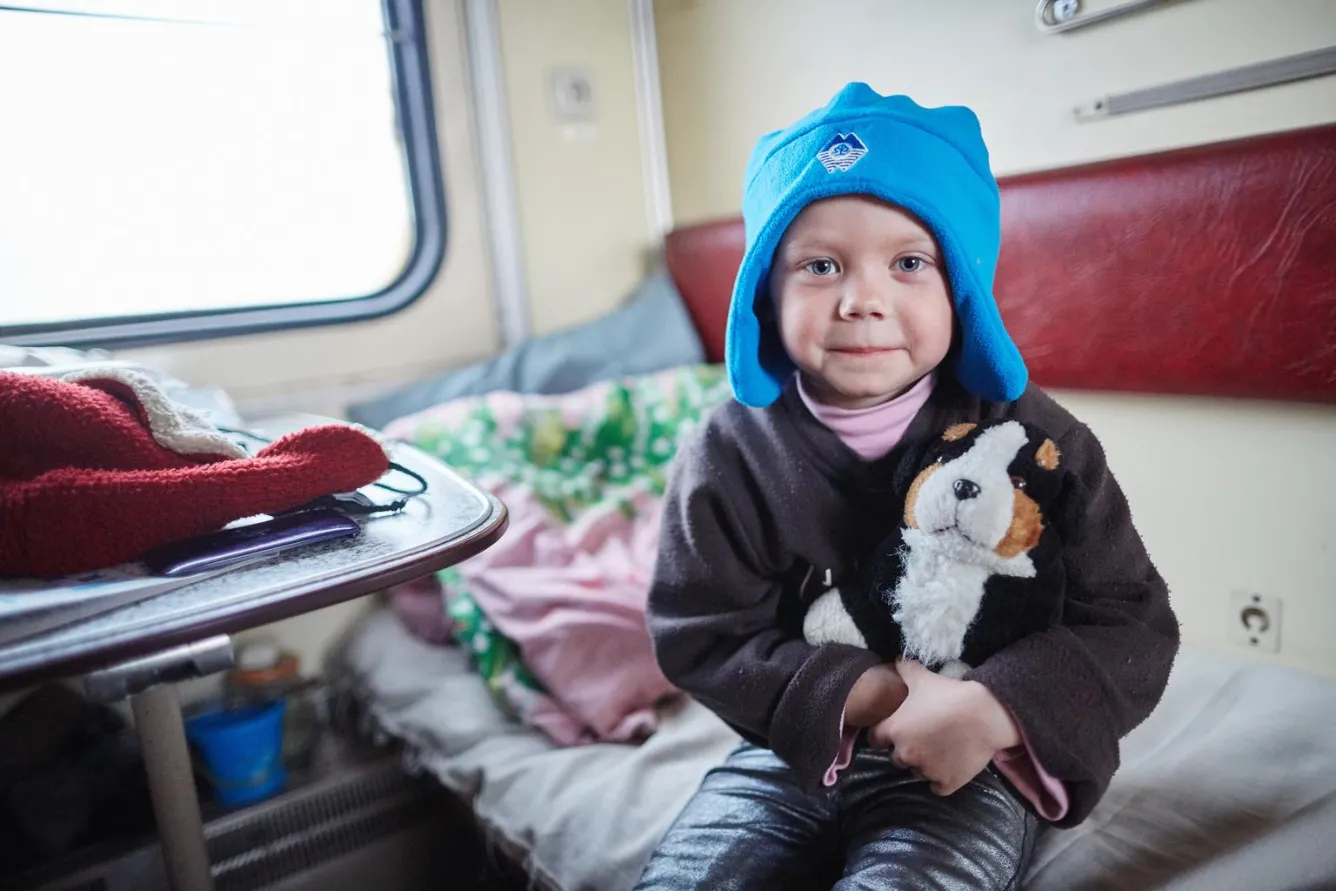There has been a lot of ongoing debates lately around migration. But why is it on the news and what is the Global Compact for Safe, Orderly and Regular Migration everyone is talking about? What does it mean for children refugees and migrants, and their rights and protection? Here are five things you need to know about what is happening in Marrakech this week.
On December 10th and 11th 2018, representatives from countries throughout the world – including from Canada – are meeting in Marrakech, Morocco for the Intergovernmental Conference on the Global Compact for Migration. This event is an important step for countries to find a common way forward to an ever-growing reality in our world – migration. Globally, there are an estimated 50 million children on the move. More than half – a shocking 28 million – have been uprooted by horrific conflicts. The number of child refugees jumped by roughly 75 per cent between 2010 and 2015. It’s no coincidence that the same time period saw 15 conflicts either break out or reignite – from the Syrian Arab Republic to South Sudan, from Yemen to Afghanistan. .
The Global Compact for Safe, Orderly and Regular Migration (GCM) is a landmark agreement that recognizes for the first time that children are central to migration management. It proves that UNICEF’s six-point Agenda for Action is doable and provides a framework to bring it to life. UNICEF actively participated in the 18 months of negotiations that led to the final document – including the involvement of young migrants in discussions.
Five key things to know about the Global Compact for Safe, Orderly and Regular Migration:
1. The GCM is the first-ever global cooperative framework to make migration safe and positive for all, including children.
Migration is a global reality and no one country can manage it alone. Governments have been working together to jointly design principles that would balance the needs and interests of migrants with the countries they came from and the countries they are going to. The GCM principles cover the many dimensions of migration: from safety and treatment; to integration and international partnership, to the root causes of why people and children are being uprooted. It harmonizes long-term, inclusive solutions with labour and law enforcement – in an effort to ensuring lives are saved and children’s rights are protected.
2. The GCM principles recognize that children are children first, no matter where they are.
Globally, there are an estimated 50 million child migrants. Millions more are affected by migration without ever leaving their homes – left behind by fleeing relatives or not given status in their home countries. Without creating any new legal obligations, the GCM will guide countries in meeting child rights obligations. As signatories of the UN Convention on the Rights of the Child, countries, who are signatories, are already bound to protect the rights of all children- including migrant children.
3. The GCM will help make migration safe and empowering for children and young people.
Around the world, millions of families are fleeing their homes to escape conflict, persecution and poverty. Whether fleeing oppression or seeking opportunity, migrant children and youth are especially vulnerable to violence, sexual exploitation, social exclusion and discrimination. Migrant children also have challenges accessing basic health care and nutrition, and most will not have access to school. These vulnerabilities have lifelong impacts.
The Compact proposes measures that address these vulnerabilities head-on with child-sensitive principles that serve the best interests of the child at all times. This protection extends to unaccompanied and separated children. All the measures proposed in the Global Compact that concern children are practical and doable – in fact, many countries are already doing them. Some examples of these principles in practice are:
- keeping families together and speeding up the process to re-unite families;
- ensuring those dealing with migrant children – social workers, border police, educators, health care workers – are trained and empowered to uphold child rights;
- ensuring that children are provided safe access to comprehensive health, nutrition, education and to protection from violence and exposure, free from fear of detention or deportation; and
- promoting measures to combat discrimination and harassment experienced by children and young people in the country they have found themselves.
4. The GCM principles push for a ‘whole-of-society’ approach that is grounded in partnership. This holds opportunity for children and young people as partners in the solution.
The very nature of migration requires partnerships and cooperation, and it also requires a focus on communities. For example, cities are often responsible for meeting the immediate needs of children and families, including reception, housing, education and healthcare. Therefore, the GCM upholds partnerships beginning at community level with local leaders, local groups, diaspora, parliamentarians and civil society, expanding to regional and national authorities to pool resources and knowledge. Most importantly, the involvement of migrant communities is emphasized, as partners in finding solutions.
Children and young people offer key insights into the nature of their vulnerabilities. They can exchange practical experiences and offer solutions. They can voice ‘what works’ to make migration ‘work for all’. As the group that makes up half of the world’s uprooted, having children and young people at the table in this collaboration, is key and a critical step forward.
5. The GCM is a voluntary non-binding agreement.
The GCM will not create any new legal obligations, any additional costs nor undermine the national sovereignty for the countries that sign on. On the contrary, it will allow for cross-country collaboration and help countries meet their existing child rights obligations. As signatories of the UN Convention on the Rights of the Child, Canada alongside the other countries, have committed to protecting the rights of ALL children. As well, in 2015, all countries including Canada committed to the 2030 Agenda of leaving no child behind – including migrant children. These existing commitments stand – with or without the Global Compact.


